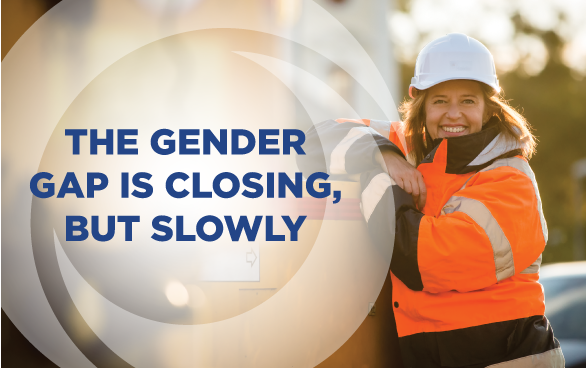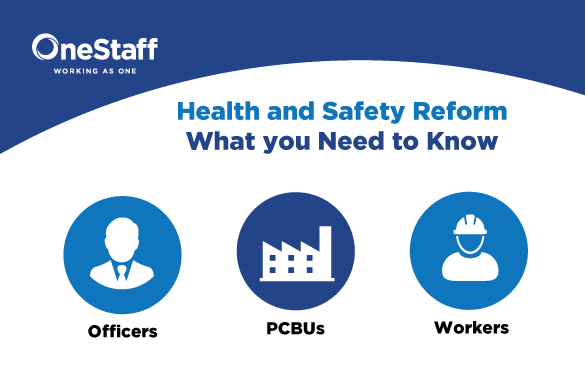New Zealand’s core industrial and trades sectors have taken a positive step forward to reducing gender disparity, however there is still much work to be done. These are some of the new insights from our latest OneStaff What’s My Rate? New Zealand Industrial and Trades Wage Report, which delves into gender, wage, job satisfaction and recruitment trends from the previous 12 months.
Women in Industry
Overall, the number of Kiwi women in our country’s industrial and trades roles has risen since the 2019 What’s My Rate? report. Previously, only 13.77% of the study’s participants were female, however this figure rose to 20.81% for 2020.
From the results, it appears that campaigns to bring more young women into STEM subjects and trade professions has begun to pay off – 41.16% of the women surveyed are from the Millennial age group, with a further 9.51% from Generation Z. Generation X makes up most of the rest of the population, as less than 1% of women in these sectors are Baby Boomers.
Where Women Outnumber Men
Our survey grouped Kiwis into one of five sectors – Commercial & Hospitality, Construction & Infrastructure, Engineering, Manufacturing, Production & Logistics, and Trades & Services. In only one sector – Commercial & Hospitality – did women outnumber men.
Indeed, within this sector 67.24% of respondents were female. Unfortunately, as soon as we look outside this area we see a significant lack of women talent – Manufacturing had the next best representation of women, at 17.82% of respondents. Engineering had the least, with only 2.04% of respondents being female.
That said, across all fronts, the number of women was up. In no industry did female talent drop from 2019 to 2020 – so while progress is slow in areas like Engineering and Trades & Services, progress is still being made.
The Gender Pay Gap
Much like diversity, the gender pay gap has also closed slightly since 2019. Our report found that men earn an average wage of $25 per hour, with women earning only $21 per hour – a 17% difference. This is the case despite women holding more high school certificates and tertiary qualifications than men, with the exception of trade-specific training (where men beat women by more than 10%).
For context, the average gender pay gap across New Zealand sectors is just 9.3%1.
Sectors with the Lowest Pay Gap
- Commercial & Hospitality – where women earn $1 p/h more than their male counterparts.
- Construction & Infrastructure – where the gap closed from $3 p/h in favour of men to $1 p/h.
Where More Work is Needed
- Engineering – which not only has the lowest representation of women out of all sectors, but has a pay gap of $7 p/h ($2 p/h more than its gap in 2019).
- Manufacturing, Production & Logistics – where the gap also increased, from $3 to $4 p/h.
The Trades & Services sector remained unchanged since 2019, with a $5 p/h pay gap.
To end this section of the article on a highly positive note, we’re pleased to reveal that within the Generation Z age group, there appears to be no pay gap at all. Is it possible that companies are rewiring their hiring methodology to ensure new entrants into the industry are treated equally? This will be something for us to check back in on in our next What’s My Rate? report.
1https://www.stats.govt.nz/news/gender-pay-gap-unchanged-since-2017
How Women Feel About Their Workplace
So how do women feel about their leaders and their work?
Management Traits
Women, like their male peers, told us they expect managers to lead by example, and to be fair/even handed. Unlike men, women prefer their managers to be supportive as well (whereas men prefer leaders to have practical experience in the trade). Women also value respect and open door policies more than men.
Happiness
Men are, by and large, happier than women within the industries we evaluated. Across all the metrics of happiness and satisfaction that we measured, men beat women each time. Most notable were feelings of “being valued”, where men said they were a 3.07 out of five, compared to women’s 2.96. Women are also more likely to seek new employment, and are less satisfied with their pay.
That said, women are no easier to sway to a new role than men. We asked both genders how much money it would take to get them to consider jumping ship to a new company, and both groups chose $5 p/h as the extra hourly wage it would take. This is actually up from last year, where women said that it would take only $2-3 p/h.
In Summary
New Zealand’s industrial and trades sectors are taking positive steps towards closing the gender gap, but there’s more work to be done.
Overall, women are still less happy, less engaged and less satisfied with their pay. The fact that they are also more willing to seek new employment should be seen as a warning to employers that these employees cannot be ignored – lest they jump ship.
Want to find out more? The full What’s My Rate? report features more gender insights, as well as detailed findings on remuneration trends and life at work. Download your copy here
We hope you enjoy reading the insights from our survey. If you have any questions or wish to discuss any point in greater detail, don’t hesitate to reach out to us for a more detailed discussion.










